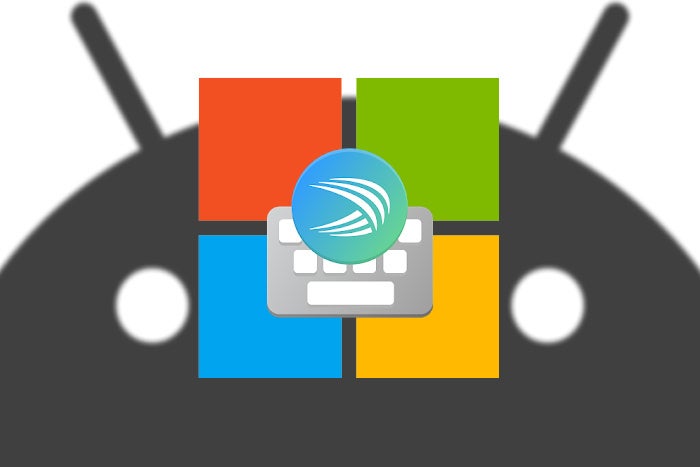Two and a half years ago, a strange ripple struck the misty waters of the Android ecosystem: Microsoft, a company that had long been a footnote to modern mobile computing, was buying SwiftKey — one of the most popular and seemingly successful keyboards across all of Android (and beyond).
From the outside, the announcement seemed to come out of nowhere. SwiftKey was an Android staple — one of the earliest keyboard success stories on the platform and a popular choice for phone-makers, too — and Microsoft was, well, Microsoft. The company was still outwardly focused on its own Windows Phone platform, and it even had its own cross-platform keyboard app under active development. (It formally killed that effort off last summer.)
So how in the world did this all add up? What did Microsoft want with SwiftKey? Was it going to turn the app into the "Microsoft Keyboard," in an attempt to flesh out the then-nascent Microsoft experience one could create on Android? Was it going to put the app on life support while engineers extracted its innards and transported them to some other more Microsofty project? Was it going to blend its essentials into a fine minty foam and then feed 'em to Clippy, with the hopes that it'd restore his once-horrifying strength?
Years went by without any real answers. SwiftKey didn't disappear, nor did it receive any overt Microsoft makeovers. Development on the app more or less moved forward as normal. Heck, even now, if you look at the app's Play Store entry, there's nothing there that immediately indicates it's a Microsoft entity. The app is credited simply to "SwiftKey," as the developer, and a copyright notice at the bottom of the page lists "TouchType Ltd" as the owner.
This summer, however, we're finally starting to get a whiff of Microsoft's long-term plan for the app and the real reasons it brought SwiftKey into its arsenal. And as of now, at least, it looks like the strategy will play out on two separate fronts.
Front #1: The Windows benefit
This first front is something we discussed in my weekly newsletter earlier this summer — and it's a critical twist: Microsoft is currently in the midst of developing a desktop version of SwiftKey that'll eventually become part of the Windows 10 operating system.
The company started testing the desktop app with beta testers a couple months ago and reportedly plans to bring it to Windows "later this year" as the stock on-screen keyboard for Windows' tablet mode.
That delivers two big benefits to Clippy's virtual progeny: First, Microsoft gets a polished and refined keyboard with outstanding predictive technology for its own operating system. That kind of thing isn't easy to develop — not if you want to do it well.
And second, it gains the advantage of presenting a familiar experience to tens of millions of Android and iPhone SwiftKey users — users who might someday be persuaded to buy a Microsoft Surface device instead of, say, an iPad or convertible Chromebook for their larger-screen computing needs.
But all of that's just part one. The second and equally significant part of the equation is something that's just starting to come into focus this week.
Front #2: The subtle Microsoftization of SwiftKey
Since the moment of its purchase, Microsoft has been incredibly careful not to make SwiftKey look or feel even remotely like a Microsoft app. From the lack of prominent branding to the lack of any major visual changes, the company seems to be treading lightly in an effort not to spook SwiftKey's loyal base of users — or to make them worry that their favorite keyboard app is suddenly turning into something different.
Well, two and a half years in, Microsoft finally seems ready to start testing the waters. Over the weekend, the company rolled out an update to the beta version of its SwiftKey Android app with an interesting little addition in place:
 JR
JR Now, I know what you're thinking: A built-in translation feature? Big flarkin' deal, right? Who cares?
On a certain level, you're right: This update is nothing transformative. But it's the first time we're seeing a real integration of Microsoft services into SwiftKey — and you'd better flarkin' believe that's significant.
Aside from setting the stage for more such integrations in the future, the move adds a meaningful level of Microsoft-aimed data collection into the app — something that wasn't previously present, as per the SwiftKey privacy policy:
 JR
JR Now, I'm not trying to suggest this is in any way nefarious. This sort of thing is pretty standard when it comes to an on-the-fly text translation feature; in fact, Google's Gboard app has a similar feature that generates a similar warning:
 JR
JR And interestingly, the new SwiftKey text translation features looks and works an awful lot like Google's Gboard equivalent:
 JR
JR
SwiftKey at left, Gboard at right
The key difference, of course, is that the SwiftKey version is powered by Microsoft. And it marks the knocking down of an unspoken barrier the company had maintained between itself and the SwiftKey app — a razing that clues us in to how the company's investment could pay off in time.
For context, we need look no further than another Microsoft-owned Android app — the aptly named Microsoft Launcher. The now-eponymous app was once known as Arrow Launcher and designed to feature a variety of customization options with power-user appeal. Though it was developed internally, as part of Microsoft's experimental Garage program, its connection to Microsoft was initially quite subtle and not at all pushed in the user's face.
Then, last fall, Microsoft rebranded Arrow and introduced all sorts of Microsoft integrations — everything from design language to Bing-powered search, one-tap access to Cortana, and prominent placement of other Microsoft apps and services. Perhaps most notably, it also gained a "Continue on PC" option that linked your Android home screen directly to your Windows 10 desktop, creating a powerful and almost native-feeling connection between the two realms.
So does this mean SwiftKey is destined to become the "Microsoft Keyboard"? Maybe. Maybe not. Unlike the Arrow Launcher, the SwiftKey name has long-established brand value, and Microsoft may or may not want to give that up (depending on how much value it ultimately sees the name maintaining as time goes on).
Regardless of what it's called, though, it sure seems likely that SwiftKey will become more and more of a Microsoft product over time, both via its expansion of the Microsoft ecosystem within Android and via the app's presence on Windows 10. What we're seeing this summer looks an awful lot like a first step in that direction — on both fronts — and an indication of why the company actually bought the app and why it keeps developing it today.
Let's all just hope that Clippy never finds his way into that plan.
Sign up for JR's weekly newsletter to get more practical tips, personal recommendations, and plain-English perspective on the news that matters.

[Android Intelligence videos at Computerworld]




















































































